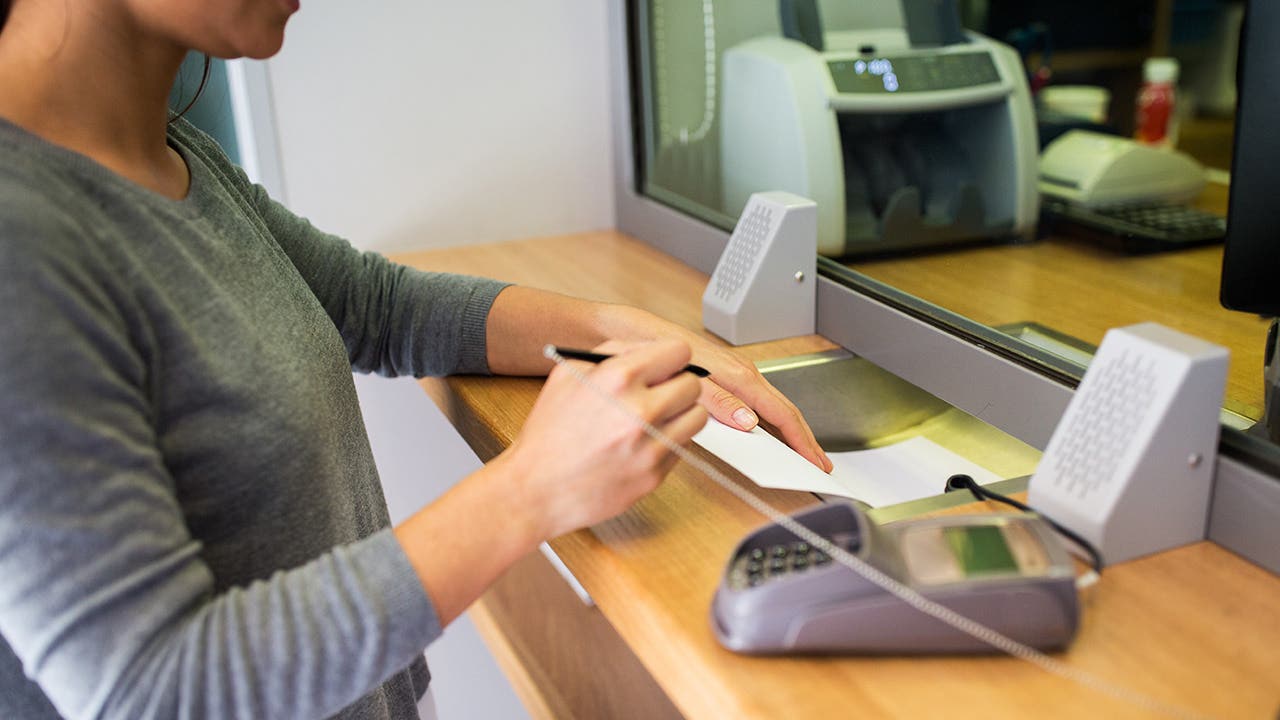How do money orders work?

The Bankrate promise
At Bankrate we strive to help you make smarter financial decisions. While we adhere to strict , this post may contain references to products from our partners. Here's an explanation for .
Money orders are a safe form of payment that can be used as an alternative to a check or cash. These paper documents offer guaranteed funds, but unlike a check, they’re prepaid and aren’t tied to a bank account.
Key takeaways
- Money orders are a safe, prepaid form of payment that can be used as an alternative to cash or checks.
- Money orders can be purchased from post offices, grocery stores, banks and check-cashing stores for a small fee.
How money orders work
Several different types of institutions issue money orders, including post offices and grocery stores. Consumers purchase the money order by paying the amount they intend to send plus a fee to the issuer.
Generally, money orders can be purchased for any amount up to a certain number. At the post office, for example, you can send up to $1,000 with a single money order anywhere within the U.S.
With the purchase of a money order, the sender receives a paper document, similar to a check, that includes the payment amount. The document requires the sender to fill out some information, including:
- The payee’s name and address
- The payment amount
- The sender’s name and address
- A memo for what the payment is for
Once the fields are filled in, the money order can be sent to the payee. The payee can cash or deposit it like a check, without the risk of it bouncing, since the full amount was already paid.
When to use money orders
There are certain circumstances when money orders can be safer or more convenient than personal checks or cash.
Some of these circumstances include:
- You don’t have a bank account. Money orders are prepaid and don’t require that you have a checking account. They allow you to pay bills and receive payment without being tied to a financial institution.
- You want to send money in the mail. If you aren’t comfortable mailing a check that contains your bank account information, and you’d rather not mail cash, sending a money order can be safer. Like a check, only the recipient can cash it.
- You don’t want to bounce a check. Money orders are prepaid, so there’s no chance that the bank can return it due to insufficient funds in the sender’s account.
- You want to keep personal bank account information private. Money orders don’t reveal your bank account information to the payee, offering a degree of privacy that checks may not provide.
How much do money orders cost?
The cost of a money order — in addition to the amount to be sent — depends on where it’s purchased, but fees generally range from $1 to $5.
Here’s what you can expect to pay at various places for a domestic money order:
| Institution | Cost per money order |
|---|---|
| *Fees may vary by state. | |
| U.S. Postal Service | $2 for amounts up to $500, $2.90 for amounts of $500.01 to $1,000 |
| Walmart | Up to $1 |
| Kroger | $1 with a Krofer Shopper’s card, $1.10 without a card* |
| Chase Bank | $5 |
| Wells Fargo | $5 |
| Truist | $5 |
International money orders aren’t as widely available, and institutions that carry international money orders tend to charge more. The U.S. Postal Service, for instance, charges an issuing fee of $49.65, plus a processing fee that varies by country. If you’re looking to send money internationally, you may want to consider more affordable alternatives, such as by using Wise to make an ACH transfer.
Where to cash a money order
Money orders can be cashed at a number of different locations, including banks, grocery stores or check-cashing stores. You’ll typically get the best deal, however, by cashing it at the same place it was issued. That’s because some institutions charge a fee for cashing orders from other issuers.
Money orders can also be deposited directly into a checking or savings account by bringing them to the bank.
To cash a money order:
- Take the money order to a bank, credit union, grocery store or post office.
- Sign the back of the money order — be sure to sign it at the counter and not beforehand.
- Present your ID and the money order to the teller or clerk.
- Receive payment. If the order is deposited into a bank account, it may take a couple days for the funds to become available.
What to do if you lose a money order
If a money order is lost or stolen, contact the issuer as soon as possible and explain what happened. The issuer may be able to replace or refund the lost money order. If your money order hasn’t been cashed, the issuer might be able to cancel it.
Be prepared to provide details, including the money order’s tracking number, purchase date and amount, as well as the receipt, if possible. It can take up to 30 days for the issuer to confirm the money order’s loss or theft.
Depending on the issuer, you may have to pay a fee. For example, Western Union charges $15 for a refund — $3 for money orders of less than $20. The Postal Service charges a flat rate of $17.30.
FAQs about money orders
-
Money orders are generally a safe alternative to cash or checks, since only the payee can cash or deposit it for the amount printed on its face. As long as you save the receipt, you can track your payment and recover any funds if it’s lost, stolen or damaged.
There are plenty of scams involving money orders. Make sure to verify the funds with the issuer if you aren’t sure it’s legitimate. Report any suspected fraud to the Federal Trade Commission. -
Money orders typically have a validity period of one to three years, but the specific time frame can vary by issuer. If a money order isn’t cashed within the designated time frame, it becomes stale or expired, and the issuer may no longer honor it.
Some issuers may charge a fee for replacing a stale money order or for refunding the amount. These fees can vary depending on the issuer’s policies.
Not all issuers put an expiration date on money orders. Domestic money orders issued by the U.S. Postal Service, for example, never expire. -
Money orders can be obtained from a variety of sources, including post offices and convenience stores, and are often used for smaller transactions due to their lower purchase limits. Meanwhile, cashier’s checks are issued exclusively by banks and credit unions and are commonly used for large transactions.
Both are prepaid instruments, but a cashier’s check has the added layer of security by being guaranteed by a bank’s funds. However, a cashier’s check tends to come with higher fees.
Bottom line
Like checks, money orders are paper documents that allow for the purchaser to specify the payee and amount. On the other hand, they are prepaid, so they can function similarly to cash. There’s no risk of a money order bouncing, and if it’s lost or stolen, you can often receive a refund or cancel it.
If you’re looking for a secure, inexpensive way to send or receive funds, money orders can be a good option.
– Bankrate’s René Bennett contributed to this article.
Related Articles



